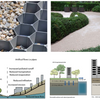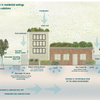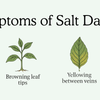Community gardens and the task of watering

Making it easier with wicking beds
Community gardens are localized hubs for environmental change. They increase urban greenery and knowledge about healthy eating and provide relatively inexpensive food sources. By tackling the issue of food security at the source they also reduce “food miles” or the emissions created from transporting food from farms to shopping centres. As the name suggests, these gardens provide a sense of ‘community’ for those involved. Covid has affected our lives in many ways and, for community gardens, has brought some new challenges.
To meet social distancing requirements, work rosters have had to be changed to reduce the number of members being on site at any one time. Also, some members are just choosing to stay at home out of concern over potential infection. Consequently, many community gardens are finding it difficult to get all of the normal tasks completed.
Watering a Community Garden
One of the biggest and most important tasks is watering. This can also be one of the most time-consuming tasks in a community garden. The amount of time required to be allocated to watering can depend on a number of factors including: -
- Size of the community garden
- Type of watering system used
- Water requirements of the plants being grown
The most time intensive form of watering is hand watering. The time can be reduced significantly by introducing an automatic watering system, based on sprinklers or drippers. However, the most effective from a time allocation and watering efficiency perspective is a wicking system. Wicking systems significantly reduce the amount of time required to water and are also the most efficient in terms of using the available water. In general, wicking beds use 80% less water than surface watering and are also much more effective in maintaining consistent soil moisture than even other forms of sub-surface watering method such as sub-surface drippers.
Most veggie gardens require about 30L of water per square metre per week in summer and this water needs to be applied daily. For an average sized community garden of say 400 square metres, this means about 1,714L per day.
Without some form of automatic or self-watering system, members in our average sized community garden would spend around 17 hours a week just on watering, based on an average tap flow rate of 12L per minute. Even then, it can be difficult to determine whether the garden has received the correct amount of water. Sometimes too much water is applied, and it is wasted or can create other issues including anaerobic soil.
The best time of day to water
Then, there is the question of when is the best time of day to water? Research has shown that early morning is the best time to water plants, so that the water gets absorbed into the soil before it evaporates in the heat of the day. Evaporation also occurs in plants, and it is worth looking at this process in a little more detail as it helps explain why wicking beds provide an environment for healthier plant growth.
Well over 90% of a plant’s energy is taken up with the process of transpiration, or the upward movement of water from the roots to the leaves. Like in a wicking bed, this process is driven by capillary action. Transpiration provides the leaves with minerals and water for photosynthesis, but also provides the plant with the ability to cool down in the heat of the day. Basically, it is an evaporative cooling system driven by water loss through the leaves. Logically, transpiration is greater during the day with the pores or stomata opening to absorb carbon dioxide for photosynthesis. The more they open up, however, the more they lose water. This is the reason why succulents need so much less water. Their stomata open up at night thereby reducing water loss from transpiration.
As plants transpire the soil surrounding the roots becomes drier, as the water is absorbed by the plant. If the soil becomes too dry, the plants cannot transpire enough to keep cool, which is why plants can wilt in the heat of summer. They become dehydrated and need water towards the end of the day to recover.
A wicking bed will provide sufficient soil moisture for this recovery to occur and at the same time reduce the incidence of dehydration significantly. Our community garden may therefore need to add an additional evening watering regime to the task list in the middle of summer. That is, unless they have installed wicking beds.
Wicking beds don’t require regular watering, and this reduces the amount of time required to be allocated to this task. Artarmon Parklands Community Garden in Sydney, for example, has reduced their watering regime from 18 hours per week to just 2 hours. This means that the members have more time to focus on crop rotation, harvesting or seed propagation; all of which enable a thriving garden.








